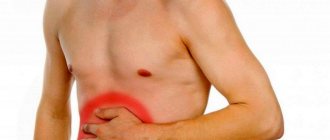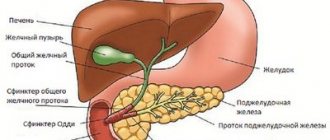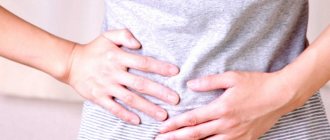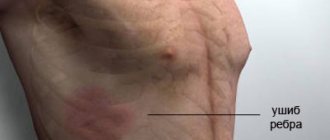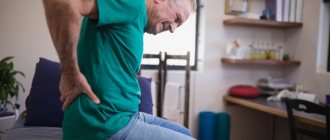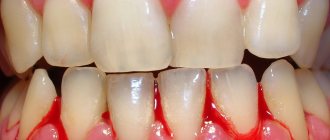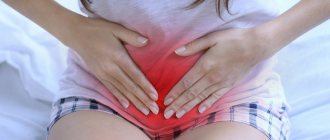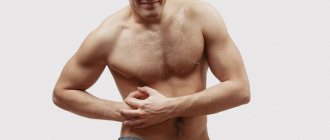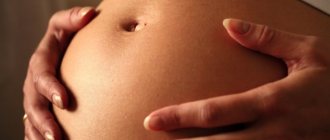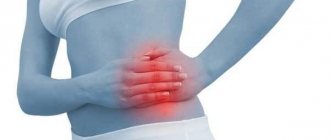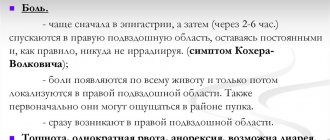Discomfort and pain in the left hypochondrium are quite common symptoms with which patients consult a doctor. Pain in the left hypochondrium is often long-lasting and intense.
On the left side of the body, in the space under the ribs, various organs are located, therefore, in order to identify the cause of pain, the diagnosis must be accurate and differentiated. The left hypochondrium is considered to be the part of the body that is located under the lower ribs on the left side of the center of the abdomen.
The following organs are located here:
- spleen;
- pancreas;
- left side of the stomach;
- diaphragm;
- small and large intestines;
- left kidney and its ureter.
In addition, other types of pain are known here, which are not directly associated with the above organs. They are a consequence of diseases of the internal organs in other parts of the abdomen or parts of the body and pass along the nerve endings.
Symptom Description
Before seeing a doctor, it is recommended to prepare, draw up a detailed picture of the symptom that has arisen, you need to track how the symptom goes, in what situations it occurs, what helps to relieve the pain, and other similar details.
When determining the clinical picture, it is recommended to pay attention to the following details of pain:
- Exact location of painful sensations. You can feel discomfort in the right hypochondrium, left, in front or behind.
- The place where it radiates. Pain in the hypochondrium is almost never isolated, often “radiating” to the left collarbone or right shoulder blade, imitating discomfort near the heart and is present even near the anatomical location of the kidneys.
- Degree of pain
- Character of the syndrome . This refers to a type of pain.
When such sensations in the hypochondrium occur not for the first time, you should find out:
- when they are most noticeable - during coughing, sneezing, sudden body turning, physical activity, fast walking, etc.;
- after what actions the pain goes away - when using a heating pad, either only medications help, or the pain goes away on its own;
- is there a relationship between pain and food - on an empty stomach, after eating or during a period of hunger;
- at what time of day the pain occurs - morning, afternoon or night.
Duodenal ulcer
If the pain on the right under the ribs radiates to the back, appears after a long period of absence of food and goes away immediately after satiety, then this may indicate a duodenal ulcer.
This disease develops against the background of intestinal damage by the bacterium Helicobacter Pylori or due to increased acidity. Pain with a duodenal ulcer, pain can be very sharp or aching. Other symptoms of this disease include nausea, bloating and flatulence. It is not uncommon, with such intestinal damage, that a feeling of hunger appears just a few hours after the last meal.
If you suspect such a disease, you should contact a gastroenterologist. The presence of the disease can be detected with 100% certainty using endoscopy. Duodenal ulcers can be treated with therapy aimed at suppressing the bacteria that caused it.
In addition, patients are advised to adhere to a special diet.
What kind of pain may occur in the left hypochondrium?
Based on the nature of pain on the left under the rib, the following types are distinguished:
- aching, dull pain in the left hypochondrium;
- pulling;
- sharp, sharp;
- stabbing.
In addition to such characteristics, in order to correctly make a diagnosis, the specialist takes into account other manifestations of pain.
This:
- initial period;
- emergence;
- character;
- duration;
- force;
- intensity factors;
- recoil;
- facilitating factors.
A patient who correctly describes the nature of pain significantly contributes and speeds up the detection of signs of the disease.
How to relieve pain?
Most of the ailments described above require prompt seeking of professional help. And in order for the doctor to correctly diagnose the disease, taking painkillers is undesirable. In some cases, you can take an antispasmodic. For example, No-shpu.
Painful sensations can be reduced by applying cold to the location.
But it is strictly forbidden to use a heating pad in such cases. It can increase discomfort and make it difficult to treat the disease.
Pain in the area of the right and left hypochondrium, radiating to the back, can cause serious disturbances in the functioning of the body. If you notice such pain, you should immediately go to the doctor. Only a specialist can accurately diagnose and prescribe the correct course of treatment. The sooner you identify a problem, the faster and more effectively you can get rid of it. Additionally, we recommend watching the following video
According to the nature of the pain
Dull aching pain in the left hypochondrium
Such pain is not sharp and stabbing; people often ignore such manifestations, considering them not dangerous, associated with hypothermia or overwork. Such pain may be signs of the following diseases:
- gastritis;
- enteritis;
- inflammation of the appendages;
- oncological formations in the pancreas or liver, spleen, left lung;
- the spleen enlarges as a result of leukemia, anemia, etc.
Nagging pain in the left hypochondrium.
This pain is most often associated with spleen problems. This may mean an increase in size, the penetration of viral infections into the organ. When the spleen is in order, it does not make itself felt; many do not even know where it is located; it cannot be palpated.
This type of pain occurs with hepatitis. Nagging pain can occur after eating fatty and heavy foods, which have a detrimental effect on the condition of the liver. The liver can increase in size and cause discomfort.
If such symptoms are ignored, complications lead to liver cirrhosis.
Sharp and acute pain
Sharp and acute pain in the left hypochondrium often indicates the presence of dangerous injuries in organs that require prompt hospitalization. At this time, the patient experiences strong, almost unbearable pain, often accompanied by an unconscious state. When this does not begin to happen, the patient tries to improve the condition by looking for a comfortable position for the body.
The following pain occurs when:
- renal colic;
- perforated gastric ulcer;
- acute form of pancreatitis;
- intestinal perforation;
- strangulated kidney cyst;
- injuries inside the body - rupture or hematomas of the spleen, fractured ribs, ruptures of the kidney or its ligaments.
To save the patient's life, surgery is often required.
Stitching pain.
Mainly associated with various diseases of the left kidney:
- urolithiasis;
- pyelonephritis.
Pain during this period is observed in the back or side and is transmitted to the hypochondrium. An increase in temperature, a gag reflex, nausea, frequent urination, and general lethargy occur. Such syndromes may be associated with the presence of stones in organs, or with their movement. In such a situation, surgical intervention is required.
When the pain is not intense, conservative therapy is used. But no matter what, you need to consult a specialist.
Ways to eliminate rumbling
The easiest way to get rid of annoying symptoms is if their cause is discovered. Other methods give only temporary results. If boiling occurs in response to overeating or eating poorly tolerated food, you can take tablets to remove gases:
- Motilium is used to improve intestinal motility.
- Espumisan is a carminative that removes excess gases.
- "Linex" is a probiotic that normalizes the state of intestinal microflora.
The doctor will select other drugs if they are needed to treat a particular disease.
Various gastrointestinal diseases can provoke rumbling in the hypochondrium, but they all require careful attention, correct diagnosis and strict treatment. Without making a diagnosis, you should not treat disorders yourself - this can lead to complications.
According to the mechanism of occurrence
The concept of the mechanism of pain is also important for diagnosis; they can be characterized by the following:
- Referred pain is pain that radiates from distant organs, for example, during a heart attack, left-sided pneumonia, pleurisy or other ailments.
- Visceral pain - during the period of intestinal spasms or disruptions in gastric motility, stretching of muscle fibers. When there is flatulence, an aching and dull pain appears, or attacks occur during intestinal colic, often radiating to nearby parts of the body.
- Peritoneal pain is a constant and precisely located pain provoked by irritation of the abdomen. Discomfort may increase during breathing and movement.
- Painful sensations that occur in women . During various processes (pregnancy, prestrual period), they experience pain in the area of the left hypochondrium.
During pregnancy, when the fetus is already large enough, natural pressure begins on the mother's organs. As a result, short-term pain occurs. They are not dangerous and are temporary. When the body produces a high number of female sex hormones before the menstrual period, affecting the ducts that remove bile, provoking a spasm. During this, a feeling of pain occurs in the right hypochondrium, which spreads to the left part of the abdomen, at the same time a bitterness appears in the mouth, and attacks of nausea.
In such a situation, you need to consult with a specialist, he will help you choose the appropriate measures to prevent this phenomenon and avoid complications.
Pain caused by cardiovascular diseases.
With VSD, this is associated with malfunctions in the mechanism for maintaining the condition of the vessels of the circulatory system, and with angina pectoris, pain in the heart radiates to this part.
The nature of pain in such a situation can be dull, stabbing, aching. Patients often cannot describe such phenomena, since they are extremely short-lived and can be in the form of attacks with an unclear concentration.
During the diagnosis, common diseases of the organs that are located in this area under the rib are not detected and the patient will be referred to doctors for examination.
Painful sensations that are not associated with disease.
Each of us has at least once noticed discomfort, stabbing pain in the left or right hypochondrium during running, fast walking and other activities. They are short-lived and disappear some time after cessation of physical activity. The mechanism of such pain is such that under the influence of stress the content of blood flow in the body greatly increases, and an unprepared person immediately feels this.
The reaction to this is that the vessels will increase in size, including the right vena cava, which runs near the liver, and which begins to put pressure on it. As a result, stabbing pain will occur in the right side, transmitted to the left hypochondrium.
It happens that such discomfort can also appear during periods of sudden movements or turns of the body. This is due to the movement of internal organs, their touching the rib, which we can quite naturally feel as pain and discomfort.
Liver diseases
Any severe pain in the indicated area may indicate the presence of inflammatory processes in the internal organs (liver, gallbladder and pancreas).
If you have such problems, you should definitely make an appointment with a gastroenterologist and get advice from this specialist. Ask your question to a neurologist for free Irina Martynova. Graduated from Voronezh State Medical University named after. N.N. Burdenko. Clinical resident and neurologist BUZ VO \"Moscow Polyclinic\".Ask a question>>
Long-lasting aching pain often indicates liver damage. This pain is especially pronounced immediately after physical activity, consumption of fatty or fried foods, as well as alcoholic beverages. Indirectly, liver problems are indicated by the presence of belching, nausea, bitter taste in the mouth and fatigue. If the pain is accompanied by yellowing of the skin, then you need to immediately begin treating the liver.
This problem should not be ignored. After all, the liver can hurt due to quite serious diseases. Including hepatitis.
The sooner you start undergoing treatment, the more effectively you can cope with the disease.
Causes of pain
The main reasons that cause pain in the left side under the rib are:
- stomach diseases, often ulcers or gastritis;
- pancreatic diseases - pancreatitis;
- spleen diseases;
- pathological process in the left kidney;
- intestinal diseases.
Often pain in this part can be caused by:
- inflammation of the diaphragm, hernia and neoplasms;
- pneumonia in the left lung;
- heart disease;
- osteochondrosis of the lower back, sternum;
- inflammation in the appendages on the left side in women;
- postoperative and post-traumatic complications;
- intense physical stress.
These reasons may have a potential threat to life and health. Therefore, in order to eliminate and cure them in time, you need to consult a doctor without delay.
Rumbling during pregnancy
Constant seething develops in women after the 2nd trimester, which is associated with stretching of the uterus and compression of the stomach, intestines and other organs. Seething may also appear as a result of complications of chronic gastrointestinal diseases, so if they are present, it is important to regularly monitor the condition and consult a doctor at the first sign of exacerbation.
Sometimes the seething, even in the first stages, is caused by a change in diet and a desire to eat incompatible foods. Since women during pregnancy tend to experience an increased appetite and eat whatever is at hand, indigestion occurs often. Elevated hormone levels only worsen the situation, causing gas formation.
Diagnostics
During the initial examination, it is first necessary to remove possible surgical pathological processes:
- Possibility of splenic rupture;
- Possibility of kidney rupture;
- Volvulus;
- Inflammatory processes in the appendix.
It is extremely important to remove cardiac risks. After all, it is with the cardiovascular system that people most often associate pain in the left upper part of the body. When pain radiates to the back (lower back), there is a high risk of complications with the kidneys. A nephrologist or urologist should treat such a disease.
Etiology of pain under the ribs
Discomfort under the ribs sometimes occurs after exercise or due to injuries or sprains. However, they are predominantly a sign of the disease becoming chronic.
Table 1. Diseases of various body systems
| Body system | Disease |
| Nervous |
|
| Musculoskeletal |
|
| Digestive |
|
| Immune |
|
| Urinary |
|
| Respiratory |
|
| Heart |
|
Infectious diseases, such as tuberculosis, also become a source of discomfort.
Pain in the hypochondrium is an alarming harbinger of pathologies of the digestive system
According to statistics, pain under the ribs localized in the anterior part indicates ulcerative formations in the stomach. In combination with girdle pain, doctors usually diagnose acute pancreatitis.
Associated symptoms
Often, the difficulty in diagnosis is associated with the fact that the patient is not able to correctly characterize the pain, its location, and the accompanying symptoms. A timely and accurate diagnosis will make it possible to effectively eliminate pathological processes, in particular during the acute course of the disease.
Pain on the left under the rib in front. May be a symptom of pathological processes in the heart. Pain can be felt on the left, radiate to the front, and discomfort appears throughout the chest space. The pain may radiate to the left arm and lead to numbness.
Painful sensations of this kind are possible during the period of a stomach or duodenal ulcer. The discomfort that appears is acute and extends to the right side under the rib.
When pain in the left hypochondrium is in front and begins to intensify during inhalation, sneezing or coughing, the cause of this condition is partial damage to the diaphragm. When there are such pathological processes, pain spreads under the shoulder blade or above the collarbone.
Painful sensations on the left side in the hypochondrium behind. This is almost always associated with a disease such as chronic or acute form of kidney pyelonephritis, which arose as a result of the penetration of a virus.
To diagnose such a pathology, you should consult with doctors.
The first and simplest thing that can help diagnose a kidney problem is examination, palpation of the diseased area, as well as tapping in the area under the rib from the back. It is important to monitor the reaction and consequences of such manipulations. If a person feels an intensification of the symptom, a reflection of pain in the depths of the back, or an attack of nausea, then most likely it is a problem with the kidneys.
This diagnosis can be carried out independently, with the help of loved ones, but contacting a specialist is necessary in any case.
When aching pain radiates to the back area that occurs in pregnant women, this may be a symptom of compression of the ureter. To relieve discomfort, it is advised to take a knee-elbow position, which will reduce uterine pressure on the internal organs, normalizing the removal of fluid from the body.
Pain in the left side under the rib, which is accompanied by enlargement
We eat temperature. This symptomatology is considered a symptom of inflammation that has arisen inside the human body. Pneumonia. The temperature increases, trembling, fever, shortness of breath, and general weakness appear.
During the period of intestinal infection, pain is felt in the middle of the abdomen, radiating to the left side under the rib. The condition may worsen, loss of appetite, pain inside the stomach, nausea, gag reflex, diarrhea, causing dehydration. The temperature rises due to acute inflammatory processes. The patient complains of a significant decrease in tone, the appearance of lethargy, and pain during a regular urge to urinate.
Causes of rumbling and frequent diarrhea
Rumbling practically cannot occur in the stomach; most often it is localized in different parts of the intestine. When regular diarrhea occurs, we can safely say that dysbacteriosis develops. Especially if a person is addicted to fast food or is forced to take antibiotics or other potent drugs.
The second common cause is food infection. It often occurs in the summer due to the consumption of unwashed fruits and vegetables, berries, spoiled dairy products, and insufficiently processed meat.
What to do if pain occurs?
Various methods of self-treatment during the period of left hypochondrium pain without proper and thorough diagnosis are not allowed, since they aggravate the course of the disease and lead to adverse consequences. In particular, heating the affected area is prohibited.
It is not recommended to take antispasmodics without the advice of a doctor. These drugs dull pain and complicate the laboratory picture, disrupting the symptoms of the disease.
In the process of the appearance of such pain, applying cold to this area is used.
Experts advise, even with insignificant manifestations of the above pain, to carry out the diagnosis prescribed by the doctor. This will make it possible to detect a dangerous disease in time and stop its development.
How to respond to pain
The first step is to seek help from a highly qualified specialist. In no case should you numb the affected area with a hot compress, as this can greatly harm your body. The use of cold compresses is acceptable. Experts do not recommend using painkillers or antispasmodics without consultation. Symptoms may disappear, making it more difficult to make a diagnosis.
You can and should contact an ambulance in the following cases:
- A sharp pain suddenly appeared in the area below the chest.
- The right side of my abdomen has been aching for a long time.
- Suddenly, a stabbing sensation appeared that bothered me for more than 1.5 hours and intensified with movement.
If the pain syndrome is not very severe, but causes some discomfort for a long time, and you also feel nauseous, you need to consult a specialist on the same day.
Abdominal pain can occur due to damage to internal organs and due to the presence of certain diseases. If such sensations occur, it is very important to seek help in time so as not to worsen the situation.
Treatment principle
When there is no diagnosis, and pain continues to bother you, you should consult a doctor who conducts initial examinations and determines the patient’s further actions. There are situations that require emergency medical care followed by hospitalization.
Emergency treatment is needed for:
- acute, sharp pain.
- aching pain for an hour.
- stabbing pains for more than half an hour that appear during movement.
- dull pain with nausea and gag reflex.
Inflammation of the intestinal appendix
Another common intestinal disease is appendicitis , which can also cause pain in the hypochondrium and back. When the intestinal appendix is inflamed, the pain can be of a different nature. With this disease, pain is often localized in the right side of the abdomen. As a rule, the sensations are tolerable, but due to the high risk of appendix rupture, you need to see a specialist as soon as possible.
Acute appendicitis can be treated surgically.
This is a fairly routine operation in which the inflamed appendix is removed. The patient must take a course of antibiotics for several days after the operation.
It is impossible to treat inflamed appendicitis on your own. It is imperative that you see a doctor who will quickly identify the problem and carry out the necessary procedures.
How to get rid of a rumbling stomach
The main task before taking any measures is to determine the cause of this condition. The method of how to get rid of seething in the stomach directly depends on the provoking factor. For example, you just need to eat or exclude certain foods from your diet. If the symptom is caused by a disease, then drug therapy in addition to diet will be needed.
Tablets for rumbling stomach
If the rumbling is not caused by hunger, then you will need to seek the help of a doctor. If diseases are detected, the specialist will prescribe a treatment regimen. To treat the symptom in question, as a rule, typical tablets for rumbling in the stomach are used:
- Motilum. Suitable for children/adults weighing more than 35 kg. Take the medicine before meals, the maximum daily dose should not exceed 80 mg.
- Espumisan. A carminative that relieves the intestines of gas accumulation.
- Linux. This medication is taken orally after meals. For children under 3 years old, the contents of the capsule can be mixed in water.
